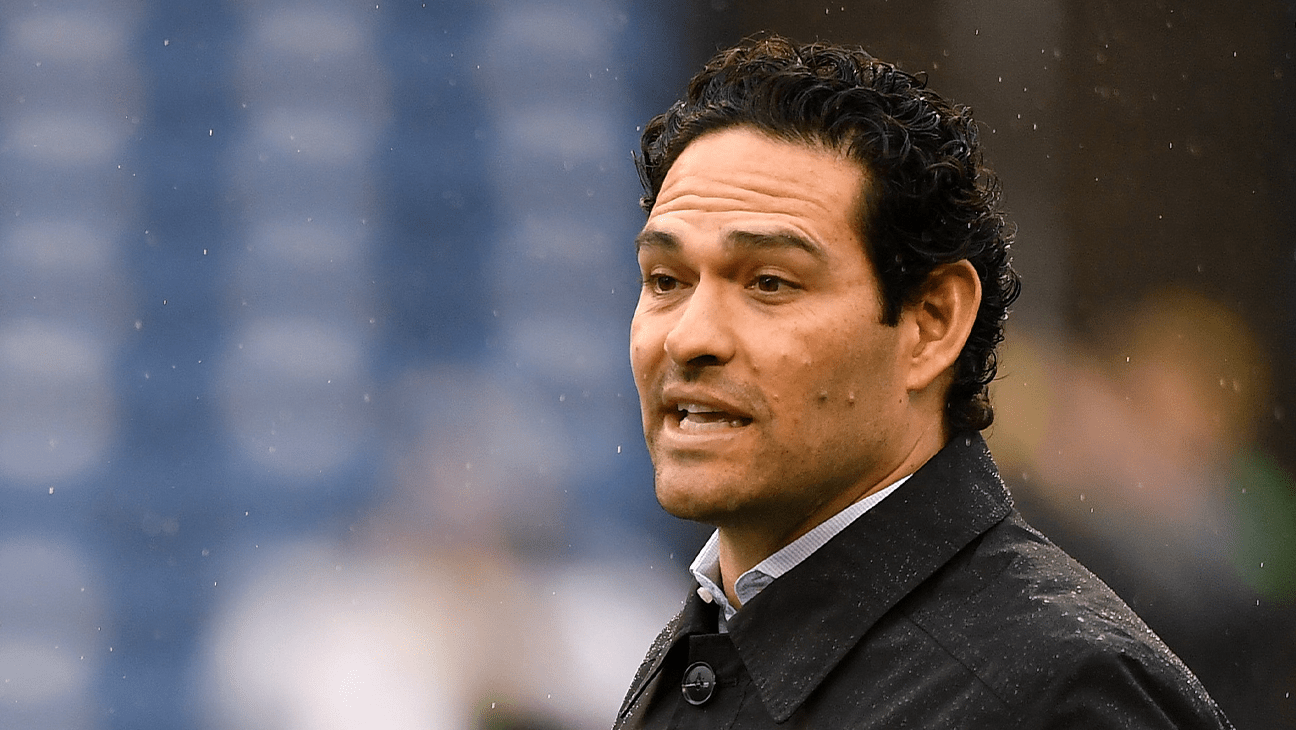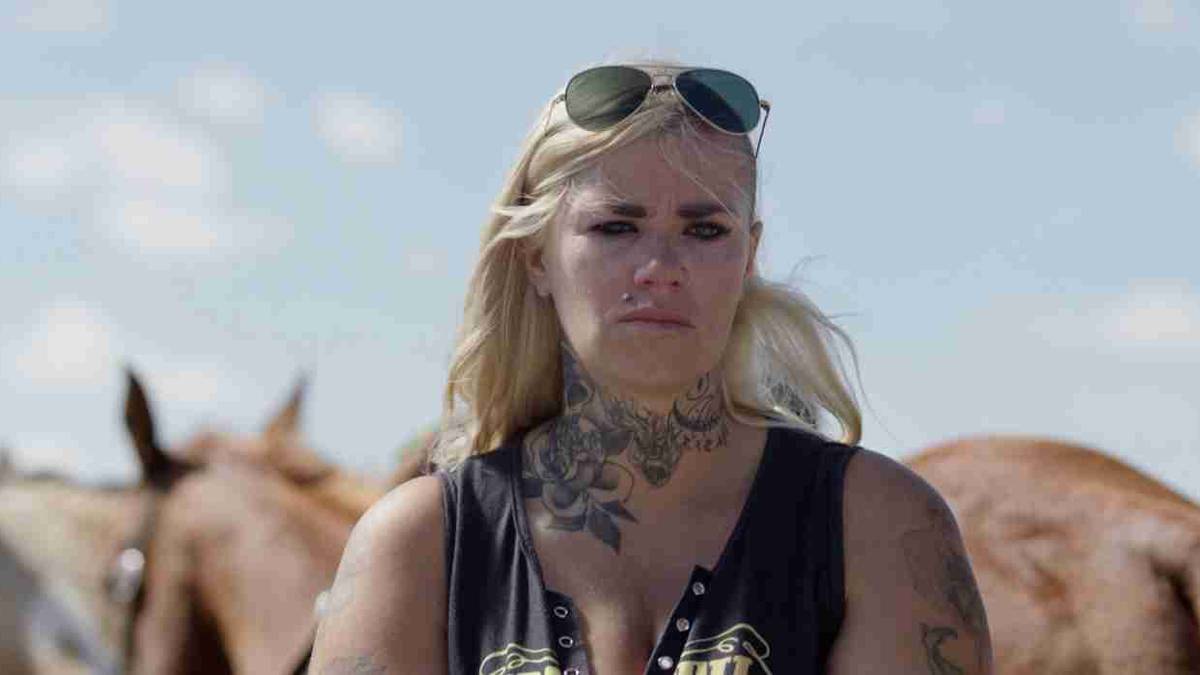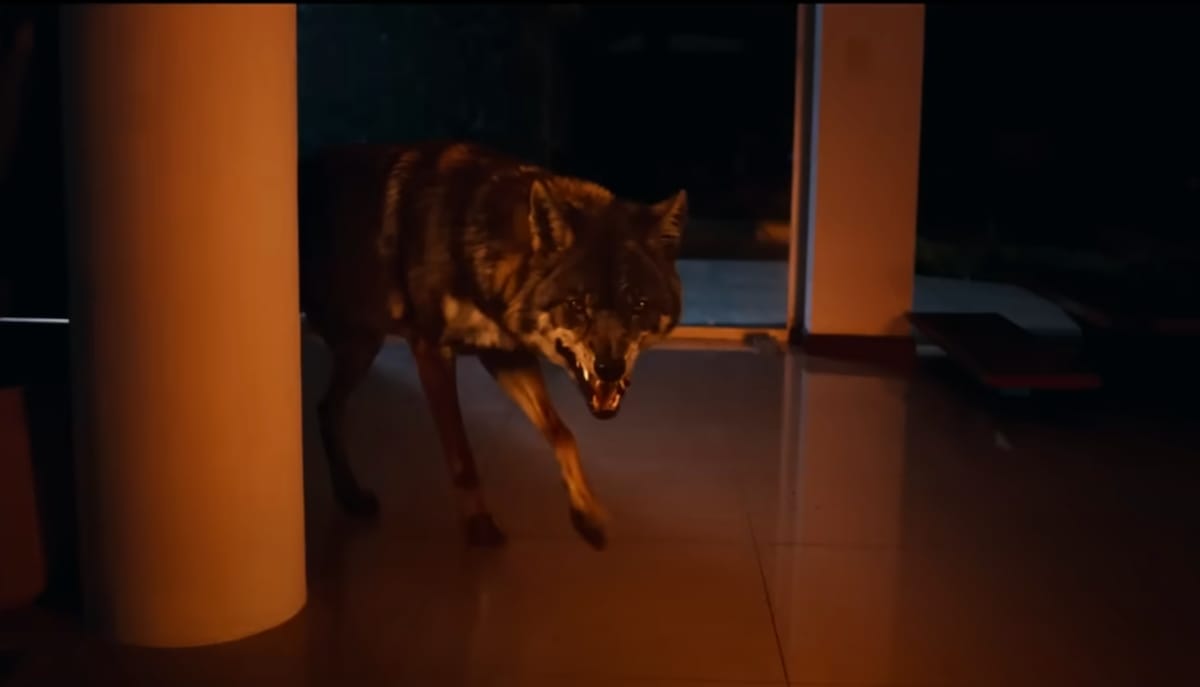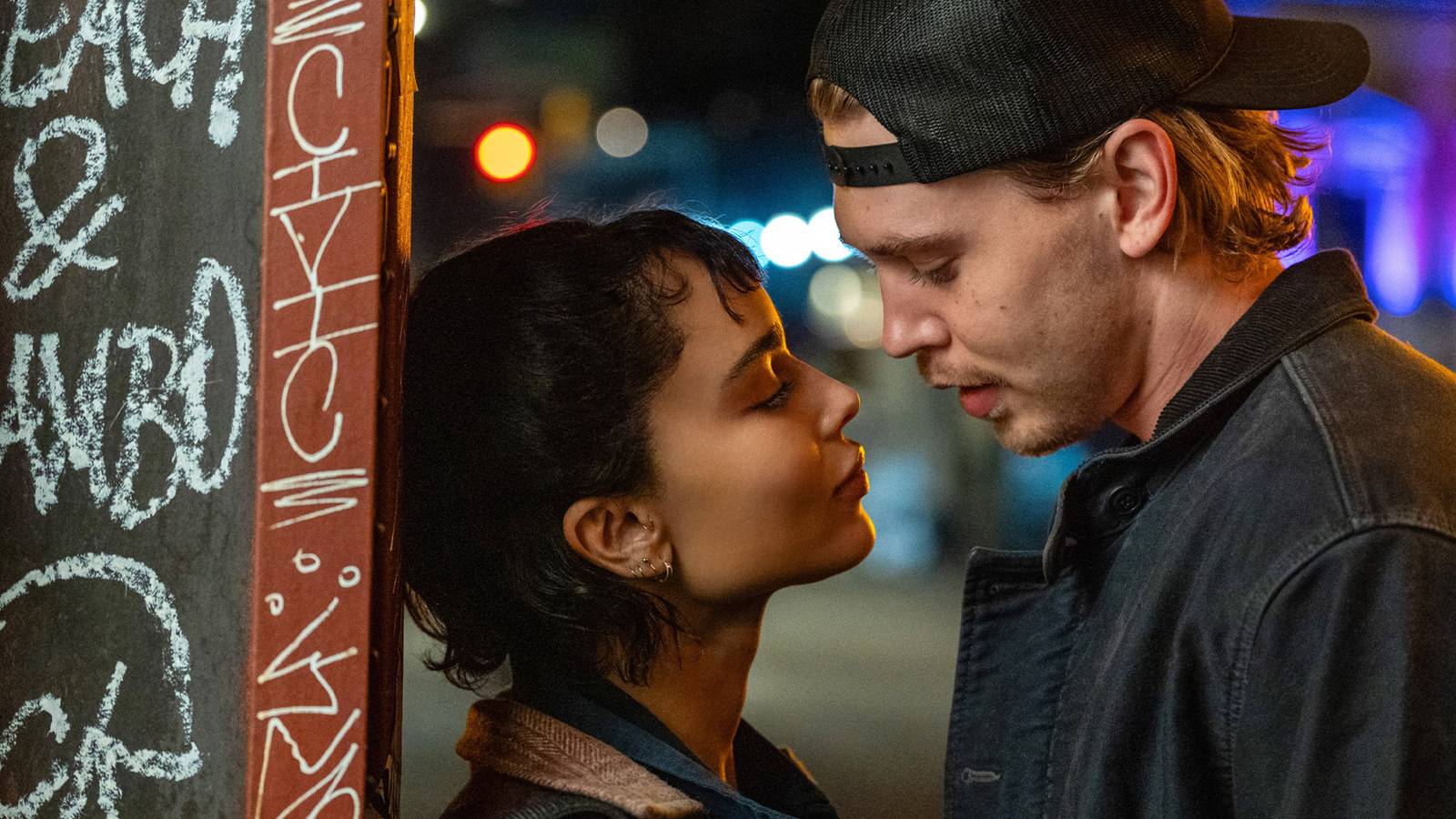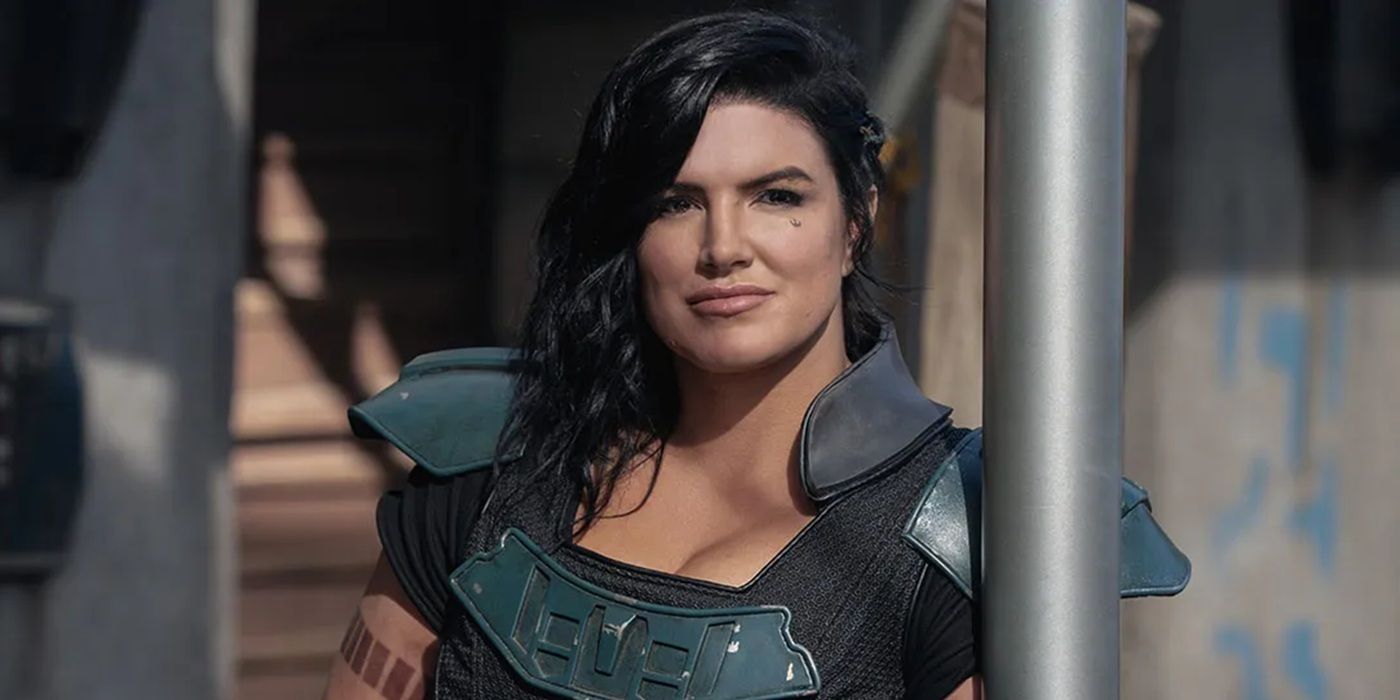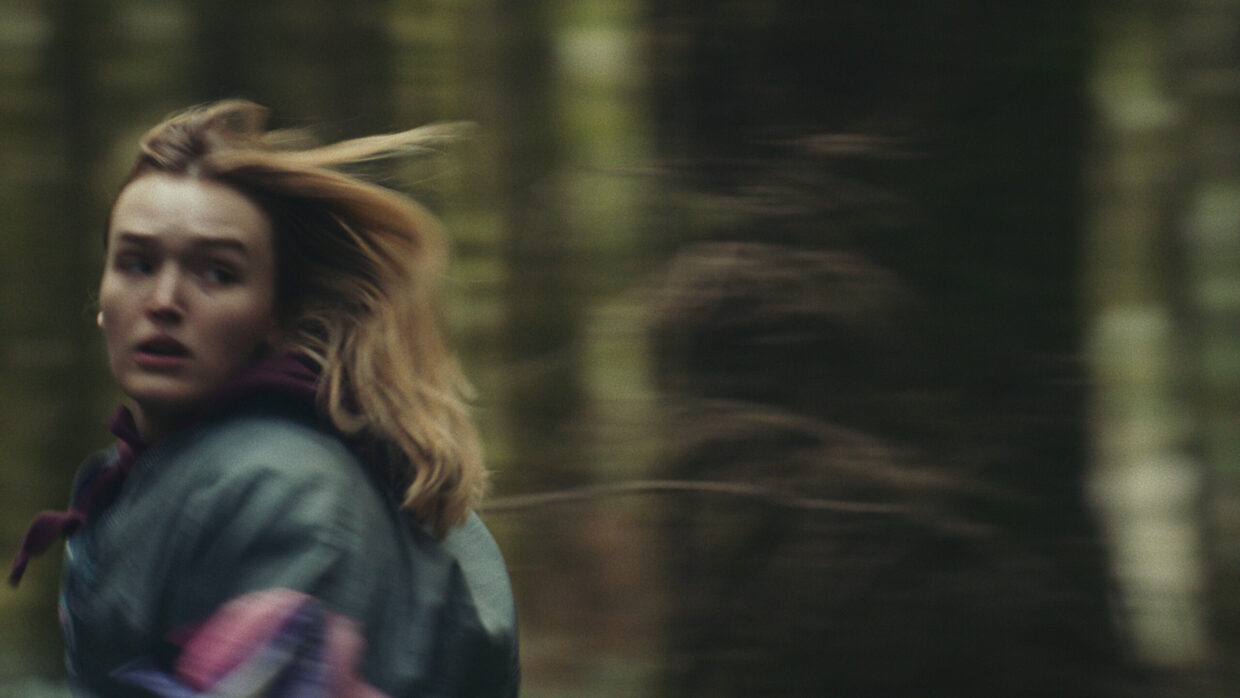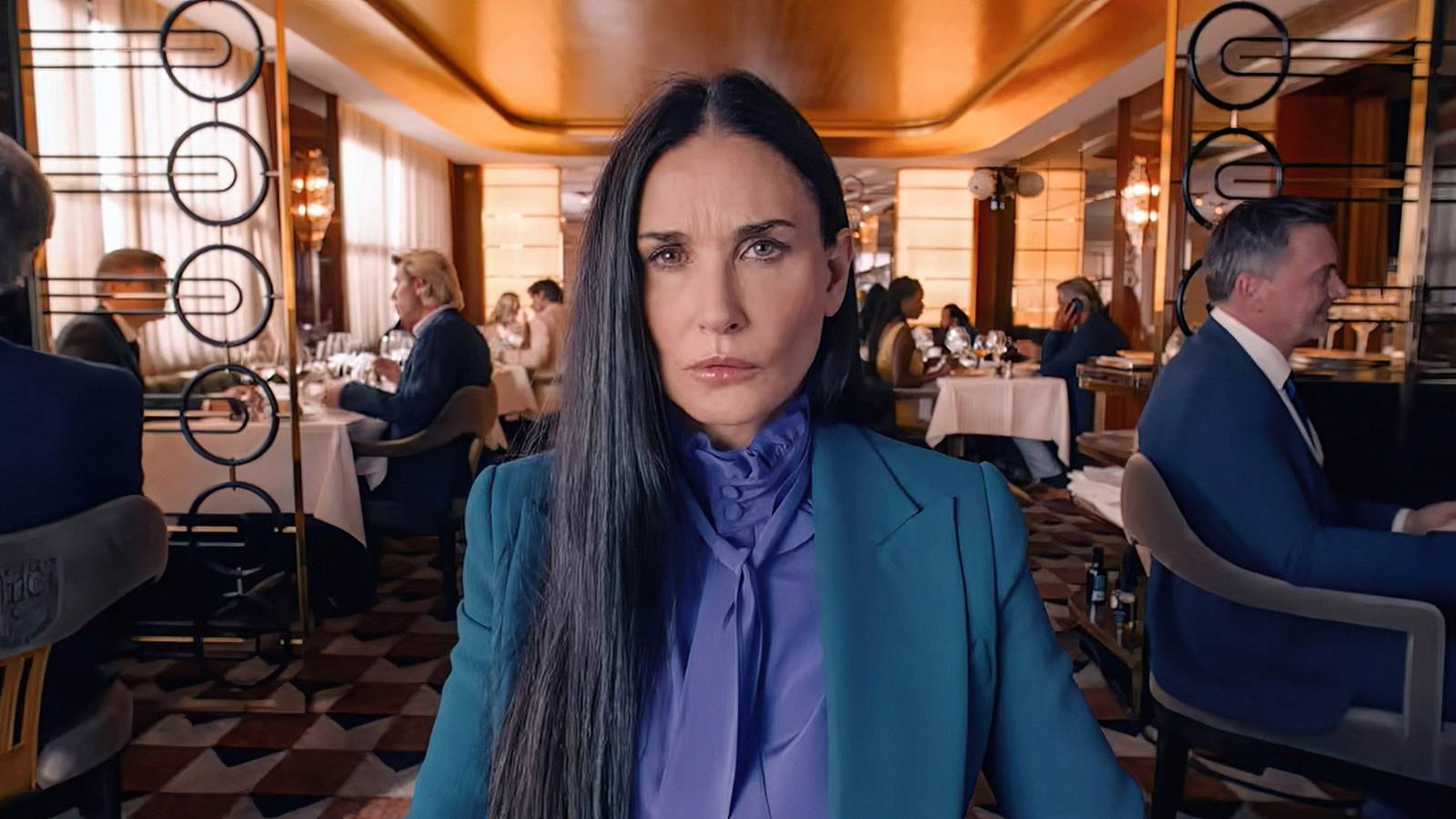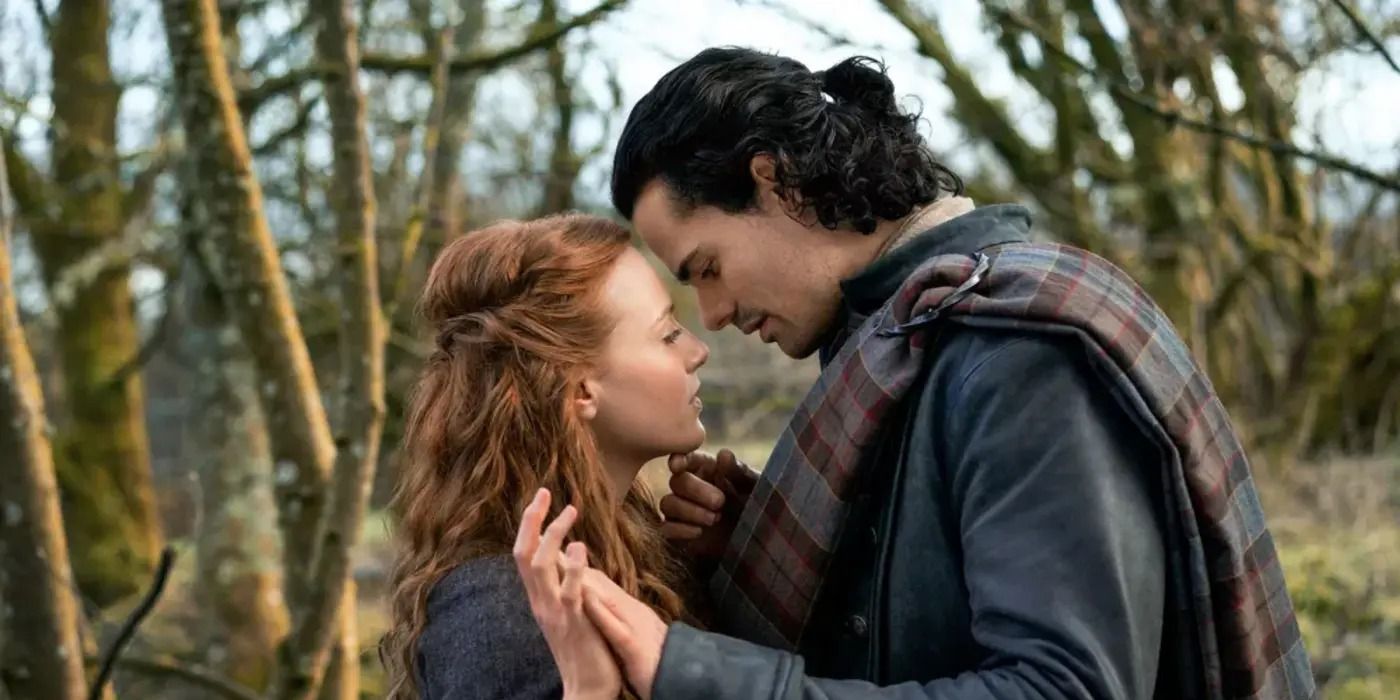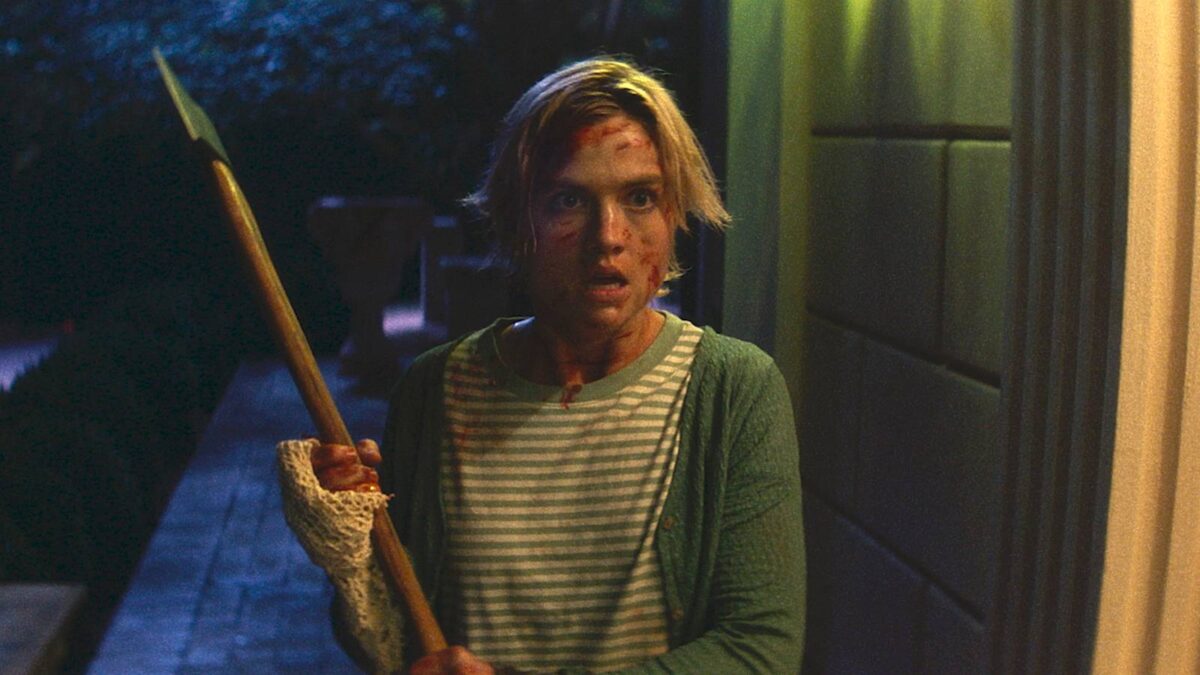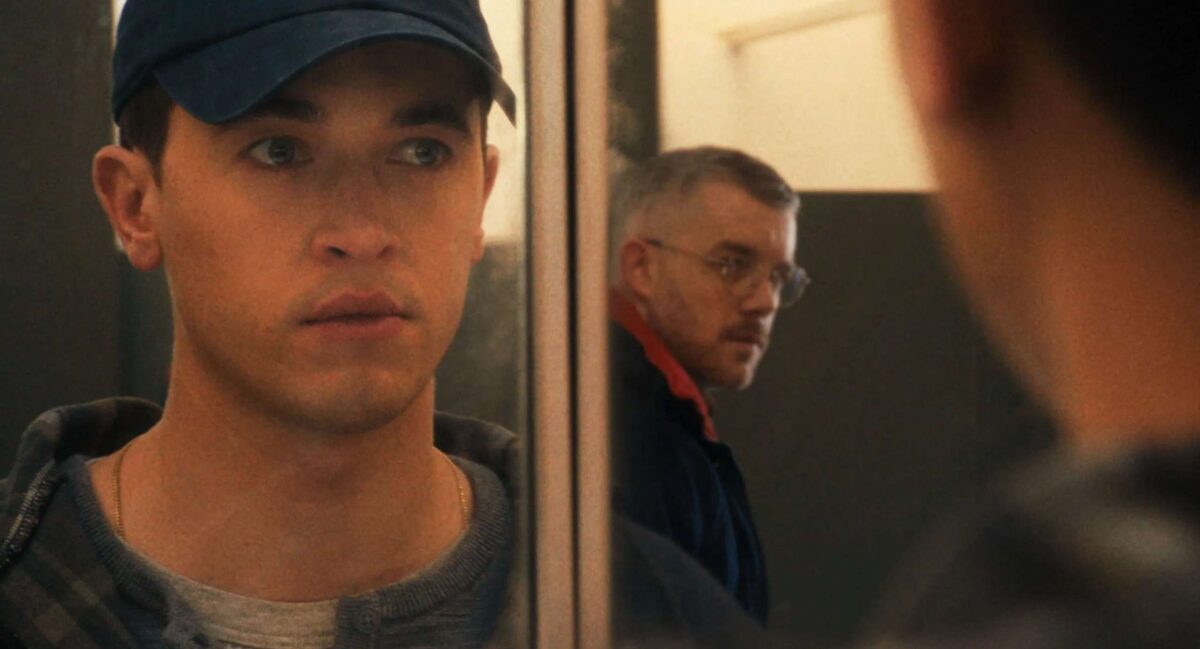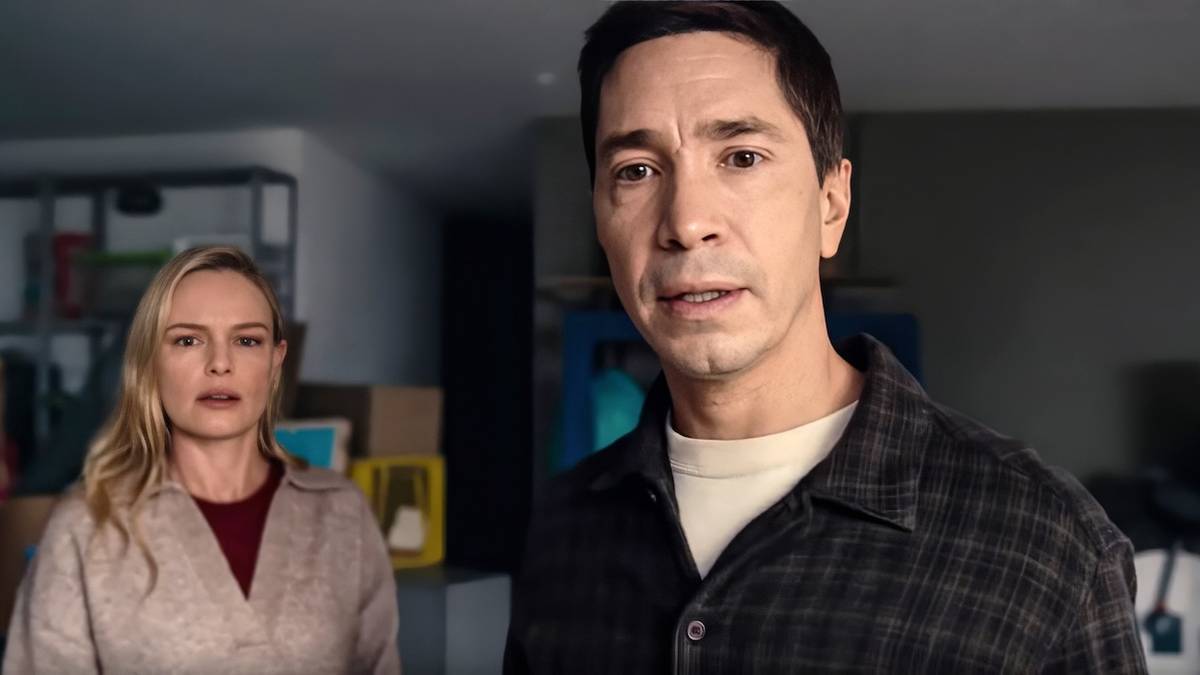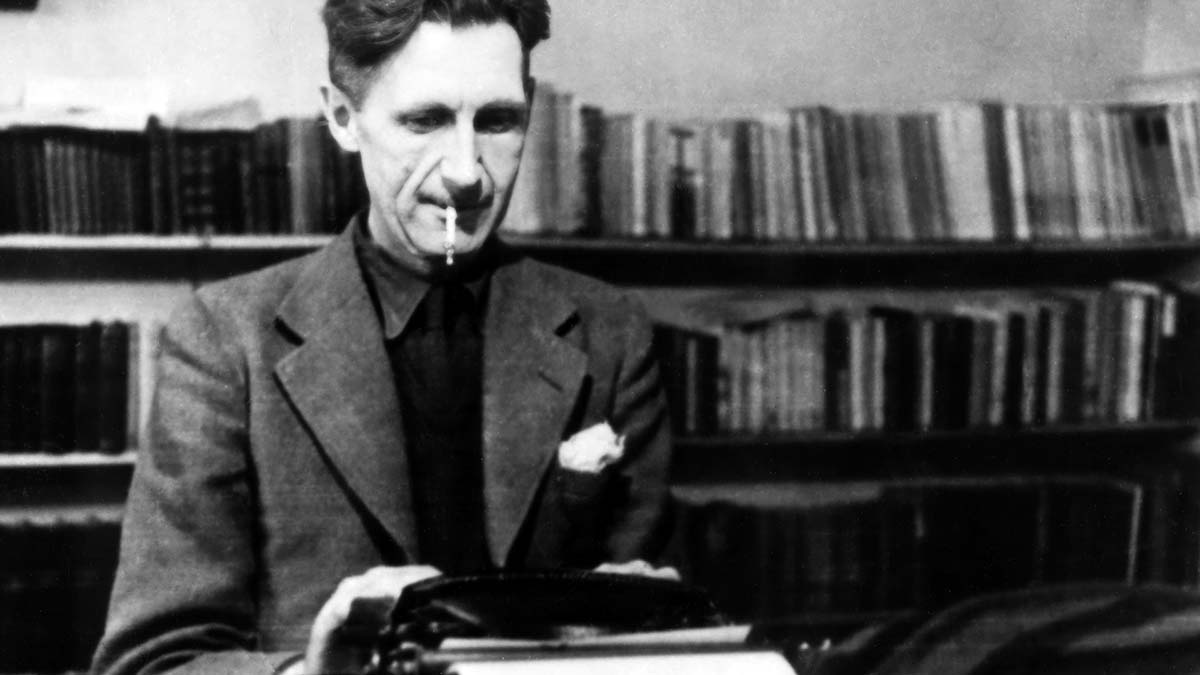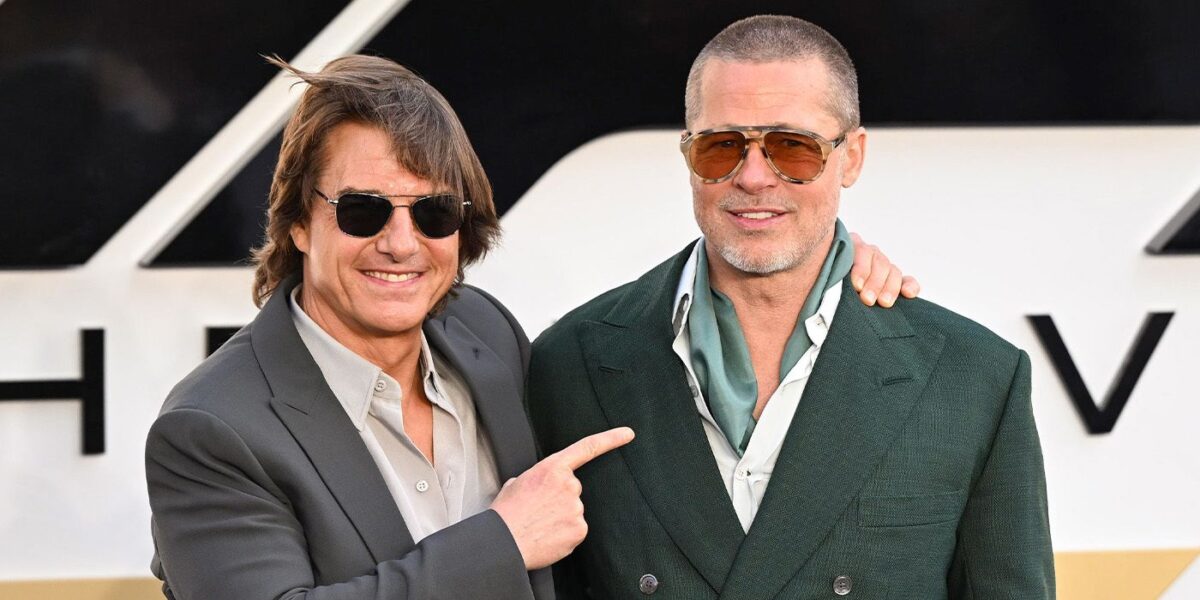
Joseph Kosinski Reveals His Dream ‘F1’ Sequel That Unites Brad Pitt and Tom Cruise in an Epic Crossover: “Talk About ‘Mission: Impossible'”
Aug 23, 2025
Summary
Collider’s Steve Weintraub talks with director Joseph Kosinski about the behind-the-scenes details of F1: The Movie.
Following two special ScreenX and 4DX screenings, Kosinski discusses his innovatice camera system, working with Formula One, the production challenges that made F1 even stronger, and more.
Kosinski also shares insights into his upcoming projects, including a UAP feature with Jerry Bruckheimer, a Miami Vice movie, and a potential Top Gun: Maverick sequel.
Like his record-breaking legacy sequel, Top Gun: Maverick, director Joseph Kosinski’s latest sports blockbuster, F1: The Movie, is groundbreaking in its innovative filmmaking techniques and commitment to authenticity. And like Maverick, F1 made a massive impact at the box office, earning it a theatrical re-release in IMAX. To celebrate, Collider’s Steve Weintraub had the opportunity to moderate Q&As with Kosinski after inviting audiences to see the film in two premium formats, ScreenX and 4DX. The movie stars Brad Pitt as Sonny Hayes, a race car driver who has a stunning comeback in Formula One after an accident brought his career to a screeching halt decades ago. But to reclaim glory, Sonny will have to go head-to-head with rising F1 hotshot, Joshua Pearce, played by Snowfall’s Damson Idris. F1 also stars Javier Bardem, Kerry Condon, Tobias Menzies, and professional Formula One racers, including Charles Leclerc and Lewis Hamilton. Check out the video above or the transcript below for all the behind-the-scenes details from Kosinski himself. He dishes on the top-secret F1 tech he was granted access to, breaks down the newly developed camera system he partnered with Sony on, teases his idea for a Days of Thunder crossover sequel with Tom Cruise, and discusses the process behind creating a ScreenX and 4DX experience with the “over 5,000 hours” of footage compiled over two years. Plus, Kosinski takes us back to the Tron: Legacy days after hours, as well as what he has in the works with Jerry Bruckheimer and that rumored Top Gun sequel.
Joseph Kosinski Looks Back on ‘Tron: Legacy’
From late-night dance parties on set to Daft Punk’s double platinum soundtrack.
Image from ‘Tron: Legacy’ poster
Image via Disney
COLLIDER: So Tron: Legacy, you know how much I love that movie. JOSEPH KOSINSKI: You were there. You were on set. You were in The End of Line Club in 2009, a young Frosty. That’s true. I wasn’t going to bring that up, but yes, I was there. KOSINSKI: That’s where I first met him. Let’s not go further. No more stories on that. Actually, early in my career, I started Collider in ‘05, and I remember being like, “Are you kidding me? I’m on the set of a Tron movie? I can’t believe where I’m at.” I’m there with other reporters, and it was like three or four in the morning, and everyone’s tired, and they wanted to leave. Peter [Sciretta] from SlashFilm and I were standing there like, “We don’t want to leave. We want to be here all night. What the fuck are you talking about? We should stay.” Everyone else is like, “We’re tired.” I’m like, “We’re watching Tron!” KOSINSKI: Did you leave? We had to leave. KOSINSKI: What you missed was, on Tron: Legacy, we had Daft Punk, actually, in that scene, in the End of the Line nightclub. I was there for that part. KOSINSKI: I think what you missed was we were shooting with very early versions of the 3D camera, the Pace camera and 3D camera system, which was this giant refrigerator-sized thing that was very bulky. At one point, the camera stopped working, so we had a little downtime. We had Daft Punk and we had everyone in costume, so we had a little dance party, DJed by Daft Punk in the End of Line Club while we waited for the cameras to be fixed. The actor who played Rinzler, [Anis Cheurfa], was also a great breakdancer. So we had really.
You’re killing me with this story. KOSINSKI: So, we had Rinzler breakdancing in the club while Daft Punk was playing, all during downtime, and you missed it because you went home early. I want to reiterate, I voted to stay. I was adamant that we should stay. But something you told me back in the day was that with Tron: Legacy, Daft Punk gave you a whole bunch of demos for you to listen to, and a lot of them ended up in the film, but some of them didn’t. So right now, you still technically have Daft Punk demos that the world has not heard. KOSINSKI: That is true, and they’re great. Every once in a while, I pull them out and listen to them, and they’re still fantastic 15 years later. Those guys are geniuses. AUDIENCE: Leak them! KOSINSKI: [Laughs] Do you know someone tried to get me to leak them? While I was making the movie, I got an email. Was it a phishing email? KOSINSKI: It was a phishing email. It said, “Hey, Joe, this is Daft Punk. We lost the masters to the music that we sent you. Can you please email us back those tracks?” They tried to trick me. I didn’t fall for it. We’re really off the rails in this theater, I’m so sorry, but I’m just going to say I moderated an Interstella 5555, which is their animated movie, and I got to moderate with their manager and the person who designed a lot of their costumes. It was amazing for me. It was a packed theater, and there were going to be DJs after. If you’re a Daft Punk fan and you’ve never seen Interstella 5555, my god, watch it. It’s fantastic. KOSINSKI: It’s fantastic. What is it like having directed one of the best movie soundtracks of all time? I’m talking about Tron: Legacy. KOSINSKI: That was a really interesting process because Daft Punk had never done a soundtrack before, so it was all an experiment. Because they’d never done it before, they didn’t know how film soundtracks were usually put together, in that, usually, you work with temp music. You’re cutting the movie and you’re putting other music on, and then your composer comes in and tries to figure out the tone you’re going for, and then writes something, and only at the very end do you get your score. Daft Punk did it differently. While I was shooting, they were sending me those tracks constantly, just giving me 10, 20 tracks at a time. I even would play them on set while we were shooting, just to kind of set the mood. To have their music while I was shooting it and while I was cutting the movie together was amazing. So, I never temped any other music into that movie. That movie was Daft Punk from beginning to end, and it just got better and better and better. It was an amazing experience. I’m thrilled that it continues to this day. In fact, they just sent it to me, I just got the double platinum album of Tron: Legacy, which is, I think, two million copies. I’ve listened to that soundtrack, and I’m not even BSing, probably 500 to 1,000 times. I love that soundtrack. KOSINSKI: What’s your favorite track? I’m just curious. AUDIENCE: “Solar Sailor!” KOSINSKI: “Solar Sailor.” Nice. Good choice. I don’t have a favorite track because all I do is start track one and just hit play, and just let it go because there’s nothing bad on that soundtrack. It’s amazing. By the way, I appreciate you indulging me in Tron: Legacy. For everyone who hasn’t seen Tron: Legacy, please watch.
The Most Challenging ‘Top Gun: Maverick’ Scene to Film Isn’t the One You’d Expect
Kosinski discusses upcoming projects and sets he’d like to revisit.
Tom Cruise as Maverick flying a plane in Top Gun- Maverick’ (2022).
Image via Paramount Pictures
So, now that you’ve done flying with Top Gun: Maverick and racing with F1, what’s the next sport we should expect from you? KOSINSKI: That’s a good question. Usually, people say planes, cars, and obviously boats are next. So we talked about maybe what that could be in the other theater. Well, we should just tell them that one of the things that you’re developing right now is a Miami Vice movie. I was saying it’s not what I expected, because the other thing he’s developing is a UAP project at Apple with Jerry Bruckheimer. KOSINSKI: Which means “unexplained aerial phenomena.” So, if you’re following the whole kind of Tic Tac phenomena, we’re deep into that. What shot or sequence has been the toughest of your career so far? KOSINSKI: There’s been a lot of challenging ones. We talked about Las Vegas in this movie, which is challenging. I always think about the sailing scene and Top Gun: Maverick, believe it or not, where Penny takes Maverick out on the sailboat, which is the Bay of San Francisco. That was, believe it or not, on that movie, probably the most challenging. When you think about that film and all the stuff you did, how is that the most challenging? KOSINSKI: Getting a sailboat to be fast is very, very challenging. Having Jennifer Connelly pilot that boat with Tom Cruise on it, slipping on the deck, having cameras that were literally going underwater and coming back up, and then I’m on a boat next to it with a technocrane trying to get my shots, holding on for dear life while Claudio [Miranda]’s pulling focus and setting exposure, it was very complicated. But again, like you said, you would never guess in that film that that was the hardest thing to pull off. So, that’s up there. Tron: Legacy, just the whole thing was hard because we were trying to do everything all the time — lit suits, 3D, digital actors. I was in a little over my head. And we shot it in 65 days, which is insane. Oblivion we shot in Iceland, which was stunning, but the locations… Putting a technocrane on a mountain, we had to helicopter stuff in. Only the Brave — working with fire. By the way, all these movies. I strongly recommend if you have not seen his resume. Just throwing that out there. KOSINSKI: So, yeah, they’re all hard, but that’s the fun of it. That’s the challenge. I love the challenge. I love doing something I’ve never done before. I love learning about something new. And F1 was my opportunity to be in the world of Formula One for two years and learn more about the sport than I ever thought I would. I had a blast making it. If you could go back in time and do one more day on any of the things you’ve worked on, what would you love to spend 24 hours on the set of again? Or, is there one where you’re like, “I’d always wanted to tweak this one shot in this one movie. If I could go back in time, I would fix that one thing?” KOSINSKI: The CLU character was a struggle. Now, if I went back in time, I don’t know if I could make it better with the technology of 2010. That would be the one thing that I always wish we could have gotten better, and really, it’s just the one shot in the real world before he says goodnight to Sam, because that’s him as a real person, as opposed to CLU. A set that I’d love to be back on. You know what was pretty cool? The Sky Tower set in Oblivion, because we had done the first version of front video projection. Being on that set with the clouds drifting by that we had shot off on a volcano in Maui, being able to switch it between daytime and nighttime, it was a really amazing space to be in.
Why Didn’t Joseph Kosinski Direct ‘Twisters’?
The filmmaker co-wrote the movie with Steven Spielberg’s stamp of approval.
Glen Powell wearing a cowboy hat and sunglasses as Tyler Owens, in Twisters.
Image via Universal Pictures
How did you end up being one of the people who wrote Twisters or came up with the idea of Twisters? KOSINSKI: So I grew up in Marshalltown, Iowa. I grew up in Tornado Alley. I grew up to every Monday morning at 7 a.m., like the first Monday of every month, they would test the tornado siren, which was only a block from my house. I remember doing tornado drills in elementary school. So, that fear of the tornado that never came to my town while I was there was something that resonated with me. So when I heard that Universal was thinking of making a sequel, I had an idea for the story, which is the movie that was made — this girl, Kate, who has this talent for chasing storms, but also is the only person to survive being hit directly by an EF5 tornado, and her story of coming back into that world. I developed that story with Mark L. Smith, who’s an amazing writer. I got to work with Frank Marshall, got to work with Steven Spielberg. I got this script to the point where Steven said, “We’re making it. Greenlit. Let’s go.” I told Glen Powell that I’d had another role for him because we had done Top Gun at that time, so I had written that role with Glen in mind. It was at the exact moment that F1 was also greenlit, so it was Sophie’s Choice. I had to pick one. I let Frank and Steven know that I was committed to making F1, and I was down the road with F1, and they wanted to make it, so I had to do it. They really appreciated me telling them because I could have tried to hang on to it and asked them to wait for me, but I didn’t. I wanted to see that movie get made. And I thought Lee Isaac [Chung] did an incredible job making it. Glen and that whole cast just did an amazing job with it. So, I’m so glad it got made, but I had to pick one. Now, a summer later, I finally got this one finished.
The Next ‘Top Gun’ Sequel Is Going to Be Massive
Maverick’s co-writer is penning the script.
Tom Cruise as Maverick smiling and making a fist in Top Gun: Maverick.
Image via Paramount Pictures
Before we jump into F1, what is the status of another Top Gun? KOSINSKI: I’ve said a few things about it. We’re working on it. Ehren Kruger’s writing the script as we speak. The idea of it is very exciting. The scale of it is massive. It’s going to make Maverick feel small in comparison, honestly. That’s all I want to say. It’s very exciting. But we’re working on the script.
4DX and ScreenX Offer Completely Different Experiences for Moviegoers
Kosinski shares the process of turning F1 into a cinematic spectacle.
Let’s jump into why we’re here. Everyone here tonight just saw this in 4DX. How do you work with the people who develop this technology to make it so it does what you want it to do while also doing what they want to do? KOSINSKI: So, I come into a theater just like this. They have a special theater for filmmakers to work on the movies. I sit in the chair and we watch the whole film. They sit next to me, and I give them notes along the way. A lot of times, it’s things, during a dramatic scene, that might have some effects in there. I’ll say, “Oh, I don’t want those. I want people to be locked in here into the drama.” I remember on this one, I said, “Can we get the bubble effect during the confetti and the smoke?” The first pass they did of Sonny when he’s flying in the end, it was intense. It was like he was driving, and I said, “No, I want this to feel like we’re floating just like him.” So we changed the motion of that. So, we just go through and dial each effect, going through the whole thing. I give them all the notes, and then they go back and they reprogram it. So it usually only takes one or two sessions. They do a great job on the first pass, getting it kind of 80%. Talk a little bit about how long it actually takes for you to do something like that? KOSINSKI: You’re just watching the movie in real time. Are you pausing the movie, or are you just taking notes? KOSINSKI: They were taking notes, and I’m just calling it out as we go, and saying, “Oh, I don’t know about that,” or, “It would be nice if it were more like this.” They’re writing as we’re going. They’re great at their job. It’s just dialing it in. It’s fun. With 4DX and ScreenX both being at this theater, I don’t want to pit them against each other, but what do you like about each format? KOSINSKI: They’re very different experiences. What I like is that it’s a different experience watching it in 4DX than ScreenX. ScreenX is more about the peripheral vision in the sense of speed, and if you don’t want to move around, it’s different. It’s a different experience for what people prefer. I have some friends who will see everything in 4DX. They just love that sensation of being moved around and feeling it that way. And I know people who love ScreenX because they’re maybe more visual in how they respond to things. So, I think it just depends on the person. But I also like that it’s a very different experience, and you can go in this format and go in that format and have two distinct experiences with this film. I’m going to do the Sophie’s Choice for you, and I’m so sorry. Your movie is playing in both 4DX and ScreenX, and you’re picking one of the theaters. Which is your preference? No pressure. KOSINSKI: Why are you making me do this? Me, personally, I’m a little bit more of a visual person. So I’d say, back row, ScreenX is kind of my vibe. But in a certain mood, if I was bringing my boys, I have two teenage boys, 4DX all the way. I think for me it’s movie-dependent. So I think that for certain movies, 4DX, other movies, ScreenX. KOSINSKI: So which one would you pick for this movie? The shoe’s on the other foot now. Being honest, for this particular movie, both formats work because I would imagine shooting. KOSINSKI: You’re cheating. You’re saying both. You could have said that. Okay, I get what you’re saying. What I should have said is for me, I am also a visual person, and the first time would be ScreenX, the second time 4DX. KOSINSKI: Apparently, in Mexico and Asia, they have theaters where they have 4DX and ScreenX in the same theater. So, if you want the full, full experience. I would like to experience. KOSINSKI: You should do it the next time you do a junket. There are none in America yet. KOSINSKI: We’ll take you to an international junket.
‘F1’ Required the Crew to Capture Shots in Real Time
The cast got one or two takes as actual F1 racing took place around them.
Kerry Condon in F1
Image via Warner Bros. Pictures and Apple Original Films
This is one of my favorite films of the year. It’s incredible. Was this more challenging than anything else you’ve done? KOSINSKI: This was, yeah, the most challenging movie I’ve ever made by far. That includes everything, or just the editing? KOSINSKI: Just as a whole, I think. I couldn’t have made this movie had I not had the experience of making Top Gun: Maverick. For me, every movie is a stepping stone and a learning [experience], but Top Gun was a huge logistical challenge. This took it to the next level because now we’re working at a real live event in front of a live audience. I’ve got 10 minutes to shoot some of these scenes. You’re at the mercy of the F1 weekend schedule, so it required us to move at a speed that I didn’t think was possible for making a big movie like this in terms of getting your footage and getting out. I had an amazing crew, I couldn’t have done it without them, and an amazing cast that sometimes only had two or three takes of a scene. Can you go into a little more detail on that? It’s called the “white space,” where you have literally minutes because you’re filming in the real places. The real F1 stuff’s going on, and you have one take to shoot something. KOSINSKI: Yeah. So, like at Silverstone, you see Damson [Idris] and Brad [Pitt] during the national anthem standing next to all the F1 drivers. That’s shot for real while it happened. Then, as soon as the national anthem ended, Brad and Damson turned and walked down the grid. I shot another scene with the reporter as we walked down who was waiting, as our cameras found him. Then I had Javier [Bardem] and Tobias [Menzies] at the end of the grid, standing next to the apex cars, and Brad walked right into that scene where he gets introduced to Banning. These things all happen within seven minutes, with 140,000 people and cars starting in the races getting ready to go. So, we had rehearsed the logistics of that for two weeks with the stopwatch, having all the actors on their marks so that we could pull that off in one 10-minute window. What happens if you didn’t get that take? KOSINSKI: I’d have to go back a year later and try again. That’s bananas. KOSINSKI: We got three takes at the scene at the end. And credit to my actors, Javier, Brad, and Tobias, for being able to pull that off in three takes. And my camera crew. I didn’t want it to feel like a documentary either. I didn’t want it to feel like it was shot live and kind of messy; I wanted it to feel like the rest of the film. So, having the amount of planning and placement of cameras and understanding the choreography of actors and where a camera could be so it wouldn’t shoot another camera was a logistical feat.
Brad Pitt and Damson Idris Trained for Months to Drive F1 Cars
“These guys had to drive for hours every day for this movie.”
Joshua and Sonny talking in their uniforms in F1: The Movie
Image via Apple
Brad and Damson were actually doing all the racing, which is like 180, 200 miles an hour. When did you first realize, “Wait, they can actually do this?” And how hard was it to get insurance on this thing? KOSINSKI: That’s a whole conversation. When I first realized they could do it was the day I took Brad and Lewis [Hamilton] to the Porsche Experience Center, which is a track that’s very close to here. It’s in Carson. If you haven’t done it, it’s worth splurging on your birthday or something and doing a two-hour session there. But I sent Brad and Lewis out on the track together, and Lewis was able to see how Brad could drive, if he could drive. Luckily for me and for all of us, Brad was just a naturally gifted driver because he rides motorcycles, so he understands racing line and grip and all those things. So, Lewis knew he was teachable. We did the same thing with Damson in England — sent him for a day of evaluation, and he didn’t have the experience that Brad had, but he listened, and he showed improvement. Both of them spent three months training with professional racecar drivers, including Lewis Hamilton, to build themselves up to the level of a Formula Two car, which is very intense You’re lying on your back when you’re driving these things, and pulling G’s, so the neck is usually the thing that most people would have a really hard time with. Any of us would only last about two laps in an F1 car, and these guys had to drive for hours every day for this movie. Yeah, there’s no part of that role that I could do. KOSINSKI: You could be a passenger for a couple of laps. No, I can’t even do that. I’d throw up everywhere, no doubt. Who do you trust for honest feedback? I don’t mean like test screening audiences. I mean filmmaker friends or people that you’re willing to hear from, or do you not do that? KOSINSKI: I really do trust the audience because they’re the only ones who have no agenda at all. All they want to do is be entertained, and they’ll tell you the truth 100% of the time. So, it’s great to have friends and to show it to friends who make movies, but I just feel like we all carry all this baggage of knowing how movies are made with us, so it’s very hard to get, I think, a, useful opinion from someone who makes films, or people who live in this business. This is my sixth film, and I’ve learned that the audience gives it to you straight. So, if they don’t like something in the test screening, if you leave it in there, they’re not going to like it when the movie comes out either. It’s not going to magically fix itself. It’s up to you to decide what you want to listen to and how you want to change it. I don’t think you should cater, but you should listen and decide if it’s something you want to fix or not. I’ve spoken to some people who, after a test screening, will go into a bathroom stall and close the door and just sit there because people will come in from the screening and be brutally honest about what they just watched. KOSINSKI: It’s totally true. I don’t think I’m surprised how most people don’t know that when we do the focus group at the end, if you’ve been part of the focus group, the 20 people that stick behind, I sit in the row right behind all those people, and they never turn around to see who else is there. I sit right there and I listen to everything, take notes, and it’s great. It’s a great part of the process. It was interesting on this movie because America is not a Formula One country. I think only 16% of our audience in the US kind of knew what F1 was or followed it, so we were showing it to people who knew nothing about the sport, which is a great way to test a movie like this. Then we also, for the first time, did a test in Britain, as well, which is a huge F1 country. So, we got feedback from people who knew about F1 and people who didn’t. Were the scores similar in both places? KOSINSKI: This is very interesting. Scores in the UK are always consistently 10 points lower. It’s just a cultural thing. What Americans would call excellent, the Brits would call “very good.” They tell you that, but it’s true. It’s exactly a 10-point difference. I had never heard that before. KOSINSKI: I know. I didn’t know that either, because usually you don’t test movies overseas, but we wanted to for this because of the nature of the story. Let’s get back to the insurance question. What is that like? If you’re not aware, when an actor starts making a movie, they are told, “You may not do this, this, this, this, this, and this, and forget about that.” You’re basically trapped. KOSINSKI: [Laughs] At the beginning, there were a lot of people asking me in the studio and producers asking me, “Do you really need Brad to drive? Do you have to? We have this amazing technology. We’ve got the Volume. We’ve got amazing visual effects. Does he really have to drive the car?” And I said, “Yes,” and Brad said, “Absolutely.” That’s why he wanted to do the movie. The tricky thing with these cars is that they actually are safer the faster you drive them, and that’s very counterintuitive and very hard to explain to an insurance company, but they only work when you drive them fast and really push them. The brakes only work when they’re red hot. The downforce of the car, the car gets pushed to the ground the faster you go, so if you go into a corner at 160 miles an hour, the car is meant to stick and go through that corner. If you go through that corner at 80 miles an hour, it’s getting no downforce, and it could actually spin out and crash. So, you have to drive fast to make it through the corner, which is the opposite of what we think of street cars, which is what we drive. So, it took a lot of conversations with the insurance company, and our professional drivers explaining to them to get them to realize that Brad had to drive 160, 170 miles an hour in order to make it through the lap safely. We got him there, but it was a long process. And it was a premium. [Laughs] KOSINSKI: Yeah. I didn’t ask what the insurance premium was. I’m sure it was not cheap. There’s no chance.
Brad Pitt’s Highest-Grossing Film to Date Makes a Statement at the Box Office
“We want original movies, we want sequels, we want reboots. We want it all.”
So talk a little bit about the success of the film, because I think it’s at, like, $580 million now, which is Apple’s biggest film. It’s Brad’s biggest film. It’s not your biggest film, but what has it been like in terms of the success? How happy is Brad? How happy is Apple? KOSINSKI: Anytime a film works, it’s, for me, just a sigh of relief, you know? Because you just never know what’s going to happen. This is kind of interesting: My highest testing film that I’ve ever done is my lowest performing film from a box office point of view. Can you name that film? Only the Brave? KOSINSKI: Correct. Yeah. It’s about firefighters. Have you guys seen Only the Brave? There we go. KOSINSKI: You just never know. You have no sense of how a movie is going to play until the movie opens. So, it’s been great to see how the film has been received. It’s an original film. This is not a sequel. This is not a reboot. These are not characters that exist in any other IP. Apple took a big risk with this film, making it, and I’m so thankful for that. But to have an original film play in a summer filled with amazing films, but sequels and reboots and superheroes, has been incredible. I think that’s what we want. We want a diverse slate in our moviegoing experience. We want original movies, we want sequels, we want reboots. We want it all. But it’s been great to see how the movie’s played. There’s something more than that. I wasn’t going to bring this up, but I’ll say it anyway. I’m a voter in the Critics’ Choice, and for me, as I said, the editing, the cinematography, there’s a lot of technical stuff here that I believe is going to be remembered at the end of the year and be talked about in awards season. KOSINSKI: Listen, it’s not why I make movies. It’s, I know, not why any of the people who worked on this film do their job, but if they get recognized for all the incredible work they did behind the scenes, that would make me very happy.
One of the Most Critical Moments of the Film Was Shot in Five Minutes
Kosinski had two chances to get the shot.
Ruben walking with his arm around Sonny Hayes in F1: The Movie
Image via Apple Films
When you think back on the shoot, what’s the day that you think you’ll always remember? Is there an experience or a moment or something that happened? KOSINSKI: The podium sequence in Abu Dhabi was, like, our last day of the shoot, and our most ambitious, hardest thing to pull off, to put Brad on the podium right after the podium sequence, the real podium ceremony of the real Abu Dhabi Grand Prix. So the crowd’s there, and I have to pull Charles [Leclerc] and George [Russell] back onto the podium to play themselves. I had two takes because they were both excited to douse Brad with champagne. So I told them on the first take, “Please don’t do it, just so I have two chances, because once you cover Brad with champagne, I’m done. I can’t shoot the scene anymore.” So, we did one take, and then the second take, they sprayed him with much champagne, the crowd went crazy, and that’s the take that’s in the movie. It was literally shot in, like, five minutes, one of the most important and critical moments, and an emotional scene in the film. So, that was intense but fun. One of the many things that I love about the movie is how it’s not about them winning the whole thing. It’s just about trying to win one race. Talk a little bit about where that idea came from, and was there ever any debate about not doing that at all? KOSINSKI: It kind of came from me watching Drive to Survive during COVID, because the first season of Drive to Survive, they did not have the participation of Ferrari, Red Bull, or Mercedes, so they were forced to focus on the last-place teams. In doing so, I think it made the series so much more interesting, because focusing on the guys that go out every week and lose is so much more relatable than watching someone go out and be the world champion and win every single weekend, which is usually what happens. So, I was intrigued by that notion of the last-place team that hasn’t even gotten a point yet. It would be an amazing thing if they could win one race. Then that idea of, what if a team owner had made a deal with his investors that he would fold the team if he didn’t win one race in three years? What if that was the ticking clock? So, that’s where that whole notion came from. To me, I just think it’s more relatable. We can all relate to being losers, right? Because that’s how life is usually. We don’t win all the time. It’s just that kind of sports movie thing where it’s an underdog trying to pull something off. Going up against Ferrari, Mercedes, and Red Bull was never believable that a team like this would be competing for a championship. Maybe in the sequel, but not in this one.
Brad Pitt in F1
Image via Apple Films
The sequel where you crossover with Days of Thunder. KOSINSKI: Exactly. Yes. How did you decide on the very ending of the movie? Was it always that ending? KOSINSKI: Baja was actually, in the first draft, the opening sequence. Baja was where we found Sonny Hayes competing in the Baja 1000, and it’s where Ruben showed up and found him and plucked him in. But Lewis Hamilton and Toto Wolff told me, “That’s ridiculous. You can’t go from Baja to Formula One. There’s just no way that any driver could do that leap.” So I said, “Okay, well, where could Sonny come from?” And they said, “Endurance racing, I guess. Like Lamar or Daytona.” So that’s where I switched the opening scene, and put Sonny Hayes in the Daytona 24 Hours race, which is an endurance race. Then I decided to put Baja at the end as his next adventure. So in the first draft, what was the original ending? KOSINSKI: That’s a good question. I have to go back and look. I think it just ended with him in the van pulling up the card and looking at it, and that was it. Oh, it’s much better now. KOSINSKI: Oh, you like the button? It’s fantastic. You’ve been working on this for forever. When did you realize, “Wait. it really works and people are loving it?” KOSINSKI: I don’t know if there’s a moment. In a movie like this, we do test these movies. It’s well known. We do these test screenings, and the movie’s usually in a very unfinished form when you do that. In the case of this movie, I finished shooting this in December in Abu Dhabi, and because of our schedule and when we were coming out, I had to test the movie four weeks after we finished filming, which is a very, very short amount of time. So, we really threw the last 15 minutes of the movie together very quickly, which is obviously a critical part of the story. But despite putting it together quickly, we put it up in front of an audience very close to here — I think it was in Torrance — and the movie just played great, even in an unfinished form. We got some great feedback, and I was able to even dial some things in. But just based on that first screening, I had a sense that the movie was playing really well. But you never really know until the movie comes out. It’s always a really nerve-wracking time. Here we are, seven or eight weeks out, and it’s still in theaters. It’s still playing, and it’s great. I love it. To see it in a full theater like this with you guys coming out, nothing makes me happier. So, thank you again for coming out.
Joseph Kosinski Has Plans for a ‘F1’ and ‘Days of Thunder’ Crossover Sequel
“Talk about Mission: Impossible.”
Tom Cruise as Cole Trickle wearing a racing helmet in a stock car from the movie Days of Thunder.
Image via Paramount Pictures
Obviously the internet can sometimes be wrong, but I read that the sequel to this could be the Days of Thunder sequel, as well. Is that true, or is that all BS? KOSINSKI: Here’s what happened. A reporter asked me a question and said, “If you could make a movie with Tom Cruise and Brad Pitt, what would that movie be?” And I just kind of threw out this idea that Sonny Hayes comes back to the world of F1 and bumps into his old rival, Cole Trickle, who raced NASCAR in the ‘90s, and they cross paths again. I just thought that would be a really great story, but probably impossible to make. Talk about Mission: Impossible. That would be a tricky, tricky film to pull off. I was going to say Paramount, Apple, Warner Bros. KOSINSKI: Just the amount of lawyers, it would be years. But yeah, in terms of dreaming of how to put those two in a movie together, I would love to figure it out because they’re both icons and amazing to work with. I’ve been very lucky to get to make movies with both of them. You’re friends with both of them. KOSINSKI: Yeah. I actually did do a table read for a movie called Go Like Hell, which became Ford v Ferrari. I was developing that with both of them in it for a while, and I did a script read-through at Tom’s house with Brad, the three of us together. So, that was pretty surreal. Then Tom was very kind to come to the F1 premiere in London, so it was a chance to see the two of them together again. But yeah, that would be amazing if we could figure out a way to get them both in the same film. I agree.
We Can Thank ‘Top Gun: Maverick’ for the ‘F1’ ScreenX Experience
It was a “happy accident” that turned into opportunity.
A camera angle from inside the car in F1: The Movie
Image via Apple
Everyone here just experienced this in ScreenX. It looked really cool. How is ScreenX different than other theaters? KOSINSKI: I was first introduced to ScreenX on Top Gun: Maverick, and it was kind of a happy accident because on Top Gun, I had six cameras in the cockpit with Tom and the other actors, but I could only use one camera angle at a time when you’re watching the film. But what I realized was, I had these two cameras on the side that were rolling the entire time we were shooting, and it turned out to be perfect footage for the wings in ScreenX. So, if you happened to see Top Gun: Maverick in ScreenX, you got a really special experience because we had all that footage that we were able to use only in that format. When it came to F1, again, I felt like it was a perfect marriage of a format and a movie. This being F1, you want to experience the speed and what it feels like to be in one of these cars. So, we sat, we worked with them again, and I gave them all the extra footage I had because I had four cameras in the car rolling all the time, and we were able to do the same thing and fill out these wings for certain sections of the film. Going to the theater gives you an experience you can’t get at home. Unless you’re a billionaire, this is not an experience you can have at home. To experience this with an audience, the film in a completely different format that’s even more immersive, that really gives you that sensation of speed, I think it’s great. Obviously, you guys would be the judge of that, but I thought it was a really fun way to experience the story. I believe that the technology is developed in Korea, and there are artists in Korea that work on all this. How do you work with the people who are designing all this, and where and when to deploy the full experience? KOSINSKI: What I do is I sit in a theater just like this, but it’s really just me and people from ScreenX, and we go through the movie, and I identify areas where I think the wings should turn on and where they turn off. It’s not just as simple as, “Oh, we’ll just make the races in the wings, and when they’re not racing, it’s off.” There are certain moments in this story where I wanted them to come on, and so we spent a lot of time finding those exact shots, where to turn it on, and then where to fade it out. Then they do their work, and then we preview it in the theater. We watch it all the way through. I make some adjustments because I don’t always get it right the first time. It’s a lot of work to take all that extra footage we had and map it out, so it takes months, and I think hundreds, if not thousands, of people working on it. One of the things I think about ScreenX, 4DX, and large screen formats is it’s just cool because you can’t do that at home. How much do you think that formats like this will be the future of moviegoing? Because a lot of times, with the normal theater, you can kind of experience some of those at home, unless it’s like a huge spectacle film. KOSINSKI: It’s my job as a director to give you guys a reason to get out of your house, to drive here to the theater, to find parking, to find a babysitter if you have kids. It’s a lot of work for some people to go to the movies, and I feel like it’s my job to give you an experience that’s worth going to all that effort. So, what I love about ScreenX, 4DX, all the premium formats, is they give you an experience you can’t have at home, and even better, you get to experience it with a big group of people. That emotional experience of being in a group and hearing people react around you and hear them gasp or hear them laugh or hear them cry, that’s such an important part of moviegoing. So, I love all these premium formats, and I love ScreenX and how they’re really pushing the envelope and changing the experience for people.
The Actors’ Strike Changed Joseph Kosinski’s Filmmaking Forever
Joseph Kosinski making F1: The Movie.
Image via Warner Bros.
I’m so blown away by the editing in this movie. I’m not sure how many of you guys realize, every sequence, you’re building tension through the cuts and where and when you decide to show a close-up of the screen in the car or Brad’s face or whatever it may be. So, how challenging was this edit compared to your other movies? Because for me, the editing in this is just spectacular. KOSINSKI: I thought Top Gun: Maverick would be the most complex movie I’d ever make, and this film took it to the next level. We ended up shooting over 5,000 hours of footage for the two and a half hours that you just watched because of the nature of what we were doing. We were capturing this footage at a real Grand Prix, which meant I had to have cameras going on every part of the track all the time. I had four cameras on each car, both Damson and Brad driving. I had cameras in the Paddock Club, shooting Javier. So, a lot of cameras, a lot of footage. Telling the story shot by shot, this was probably almost a two-year process of editing, from start to finish, done by one man, Stephen Mirrione, who was the editor on this, obviously with an incredible crew supporting him. He had to put this together piece by piece. You don’t shoot films in order. You shoot the footage of where you’re at at that time. Then we had a strike, an actors’ strike in the middle of our shoot, which complicated things even more. Six days into shooting, the actors went on strike, so I lost Brad, Kerry [Condon], Damson, and Javier. But we were shooting in the UK, so the rest of my actors were all Equity, so I was able to shoot with them, but I didn’t have my four main actors. So, what I did was I essentially just became a second unit director and shot all the racing pieces I could do without my actors for the next 38 days. So that meant, on a big movie like this, a lot of times as a director, you’re not able to shoot every shot. You have to send another unit out to go grab inserts of tires being changed or a racing shot of two cars going wheel to wheel. But on this film, because of the strike, I was able to shoot every single shot in this movie myself, which is a rarity for something of this size, but I loved it. Did it give you a taste of, like, “Oh, I’m screwed on the next one because I’m going to want to micromanage a little bit and do my second unit?” KOSINSKI: Definitely. This is the only way I’m making movies. In fact, I’d love if we could do a break halfway through, like we did with this, and take a few months down to tweak the script or edit what you have together and figure out how you want to maybe modify what you had planned in the future. So, it ended up being a great thing for the film, but it was complicated because we ended up shooting it over two different Formula One seasons. For my editor, it was even more complicated, because imagine having these races, but only every other shot. It’s a very hard way to put a film together, but we persevered and we got it done. What was your first cut that you had of this movie you were happy with? Was it three hours? Was it three and a half? Where were you in the edit when you were like, “This is a pretty good movie. I don’t know how we’re going to make it shorter?” KOSINSKI: I think the first preview cut that we showed an audience in January was two hours and 37 minutes without credits, and this movie is two hours and 27. So, it’s 10 minutes longer. Was it just tightening scenes, or did you lose one scene or sequence that you were a little sad to see go? KOSINSKI: There is a character that didn’t make it through. Actually, there were two or three characters who ultimately didn’t make it into the final cut, which is always tough because you love every character that you have, and I love those actors, but ultimately, they didn’t make it in. That happens, almost, on every film. Monza had a whole other section to it that didn’t need to be there ultimately. Was the cut you had something where you’re thinking about eventually an extended cut online, or is this the movie? KOSINSKI: No, this is the movie. No. If I watched that 2:37 cut now, I’d be asking myself, “What was I thinking?” That’s obviously way too long. It’s just a process, and it just takes time, and you have to watch it. You have to show it to people, and you have to make those trims. You’ve got to go through that process. It’s hard to do, but the first time you put a film up in front of an audience, you instantly see five minutes that you didn’t see before. But as soon as I sit in the seats, like with you guys during a preview, and I sit on the edge and watch everyone’s reaction, you can just tell instantly where something needs to come out. You can just feel it in the room. So, it’s an important part of the process. This is my sixth movie. It’s taken me six movies to kind of figure out how to do it.
A Brand-New Camera System Was Developed for ‘F1’
Mercedes also custom-built race cars to utilize the new tech.
Director/Producer JOSEPH KOSINSKI on the set of Apple Original Films’ “F1®,” a Warner Bros. Pictures release.
Image via Warner Bros. Pictures / Apple Original Films
The cinematography is breathtaking. Claudio did such an amazing job, but I want to get specific. For people who know F1, every bit of weight matters, and you’re sticking cameras on these F1 cars. You need to capture the footage, but you cannot really add weight to the car, so how did you and Claudio invent technology or work this out to be able to film these sequences? KOSINSKI: Well, like you said, the camera system that we used to shoot this movie didn’t exist. We had to invent it. We worked very closely with Sony to develop a new camera system that is an evolution of the cameras that we used in Top Gun: Maverick. These are much, much smaller, much, much lighter, and were actually built into the race cars themselves. These are custom-built race cars from Mercedes that have 15 camera mounts built into them, have special storage space for batteries and recorders and transmitters. So, they’re literally race cars built for making this movie. Sony built 20 prototypes of this super tiny IMAX-quality camera. I heard it was called a sensor on a stick. KOSINSKI: That’s what Claudio calls it. I think its official name was The Carman. I’m not sure why it was called that, but it’s basically the camera sensor in a box with a very tiny lens on it. The brains of the camera and the batteries and the recording media are all connected by fiber optic cables and sitting in the bottom of the car in a cavity under the radiators. Is that where it’s actually capturing footage, or is it being beamed out? KOSINSKI: No, it’s being captured on the car. Then the transmitter beams a signal to Claudio and I, who are in a mission control with all the monitors monitoring eight cameras simultaneously. Then we also had these knobs that we could turn that would allow us to pan the cameras left and right. So, when you see the camera panning, that’s actually us panning it from mission control while we’re watching the footage live. That was all invented and engineered and built just to shoot this film. I read that the technology you invented for this F1 might be using in their actual races in the future. KOSINSKI: Yeah. I watched a race two weekends ago, and they already switched their lenses to a much wider angle, like the movie. So, I don’t know if that was our influence, but I noticed they were already starting to change their angles to capture that sense of speed. I think the moving camera is something they’re really interested in, but theirs is going to have to be much smaller than ours. Even though ours was small, it was still the size of a phone, and that’s something that was right in front of Brad’s face while he was driving. You can’t do that in real F1, so they’re going to have to come up with something much tinier.
Joseph Kosinski on Working Closely With Formula One for the Movie
“It ended up being a really great marriage of two different disciplines.”
An F1 car in F1: The Movie
Image via Apple
What did you learn about F1 that you didn’t know that surprised you? KOSINSKI: What surprised me and what F1 was surprised about us by is how similar their life is to being on a film crew, because they’re this little universe of 10 teams that travel around the world every weekend and put on one of these races. It’s the same group of people going around the world and working, and it’s very much like a giant version of a film crew, so there were a lot of parallels. We learned a lot from them, and I think they learned a lot from us as we were embedded with each other for two years. It ended up being a really great marriage of two different disciplines. It was an amazing experience, and I’m really indebted to F1 for allowing us into their world because it’s a very closed bubble. It’s very hard to penetrate, and they let us in and trusted us, and we were able to do something that couldn’t have been done any other way. How scared were you at that first screening where you’re showing it to the F1 racers and key F1 people? KOSINSKI: I was terrified. It was in Monaco in May, and it was the 20 drivers, the team principals, and then me sitting next to the Prince of Monaco. The Prince of Monaco. It’s ridiculous. KOSINSKI: It was very intense because you’re showing it to them. I had the experience of doing the same thing on Top Gun, showing that movie to the Navy in San Diego the night of our premiere. Which went better? KOSINSKI: Actually, it was very similar. I think I was more nervous for F1 because it was such a small group of people. It’s only 20 drivers, whereas the Navy was a giant auditorium filled with a thousand sailors who were whooping and cheering. The F1 drivers were a little more cool. But it was fun because I was sitting behind Charles Leclerc, who drives for Ferrari, and I knew they were locked in because there’s a part of the film at the end where Charles gets passed by Brad and Damson’s characters, and when that happened, Charles threw his hands in the air. He was so annoyed that he got passed, and I was like, “Alright, well, he’s locked in.”
Joseph Kosinski Stepped Into Top Secret Areas (Again)
After peeking behind the curtain on Top Gun: Maverick, the director was allowed to see F1’s “back of house.”
What would have happened if Brad and Damson hadn’t been able to drive? KOSINSKI: That’s a good question. I never thought about that. I was determined for them to drive, and they were determined. So, failure was not an option. We were going to do it. I mean, if we had known early in the process that they couldn’t have driven, I would think we would maybe find someone else. But they both could, and they were great. Which shot or sequence in the film ended up being the real ball-buster, the one that was so hard to pull off? KOSINSKI: Believe it or not, it was Las Vegas. That’s a track that only exists for a few nights out of the entire year, so Brad and Damson had no chance to drive it before the shoot. They only drove it on a simulator, and then we shot that scene at, like, 11:00 at night. It was 45 degrees out, which is very cold for these cars; they don’t operate in those temperatures. The track itself is very dangerous because it’s very fast and has walls on both sides. It was our only street course, and I had one 15-minute window to shoot that scene. So, to pull all that off and put the actors in that sort of dangerous situation and it being an important scene that I only had one shot at doing, or else the movie wasn’t going to finish, that was the most intense. You got to see what’s called the back of the house of all of the different racing teams, where you got to see each garage so you could recreate a garage for Apex. Talk a little bit about what that was like, because from what I understand, nobody gets to get in that garage unless you’re part of the team. KOSINSKI: Yeah. That was the first level of top secret. What I’m really proud of, and what I got to put in the movie, are the scenes where Brad and Damson are training in the simulator. That’s like a very, very expensive video game. That is probably the most secret place of any team in Mercedes. I asked Toto, basically, for a year. Toto Wolff is the team principal of Mercedes. After bugging him for a year, he finally allowed us to shoot those scenes in the Mercedes simulator, which is like a $6 million machine that they built custom. I had very, very specific parameters of what angles I could shoot, because there’s some really proprietary hardware and things happening on the ground. It was very similar to what I had on Top Gun. There were some things I saw on Top Gun that I had to erase off my camera later. Is that true? KOSINSKI: Yeah. I went to a place where I took some pictures, and then someone took my camera and erased everything on it, and gave it back to me. Was it top-secret tech or something? KOSINSKI: No comment. You came up with the story. How did the story change from when you first came up with it to what actually ended up on screen? KOSINSKI: The bones of the story and the themes and the relationships are there, but Ehren Kruger, our screenwriter, took that idea and fleshed it out into a screenplay, which is what a screenwriter does, and is a very amazing gift that I don’t have that screenwriters have. Ehren did an amazing job then taking all the feedback from Brad and Jerry [Bruckheimer], and everyone who is working on the movie. It evolved. It took about a year from the pitch to the screenplay that became the movie.
Joseph Kosinski Shares Details on Upcoming Projects
From a UAP feature with Bruckheimer to a Top Gun: Maverick sequel, he’s got major projects in the works.
You are in a very unique position where I’m sure whatever you want to do next, someone will want to make it with you. What is it like being in that position? It’s hard to get to where you are at. It’s very rare. What are you thinking about for your next projects? KOSINSKI: You always have to have multiple things going. You can’t just have one. So, I’ve got three projects I’m working on right now, all in the script stage, which is really fun because it’s completely different from finishing a movie and selling it. Now I go back to script. So, I’ve got three scripts, and whichever one comes to fruition first will be the one I make next. I’m excited about all of them. I’m gonna get specific now. One of them is a UAP project with Apple and Jerry Bruckheimer, if I’m not mistaken. KOSINSKI: That is correct. And one of them is Miami Vice, if I’m not mistaken. KOSINSKI: Yes. I don’t know if I know what the third one is. Have you announced what the third one is? KOSINSKI: Yeah, I think it’s out there. It’s a sequel to one of the other movies we talked about. Oh, exactly. I forgot the whole Top Gun making a lot of money. So the UAP project, what is it about that story and script that says, “I want to work on this?” KOSINSKI: Well, it’s a fascinating topic. What excites me about it is Jerry brought me into it. We are working with two people that are at the very center of the topic. If anyone who follows these UAPs, you know that the Tic Tac videos is a whole world of intrigue and interesting things that can’t be explained. We’re working with two people that are at the very, very center of it. So, it’s not science fiction. It’s a real story, and we’re telling the story of these two guys who are in the middle of it. So, to me, that’s a fascinating topic. The deeper you go in, it kind of starts to blow your mind. I saw the documentary Age of Disclosure at Sundance, which isn’t out yet. Have you seen that? KOSINSKI: I have not seen it. I’m really looking forward to seeing it in that world. It deals with the stuff that you’re working on. It’s fascinating. I’ll just say it like that. When I heard that you were attached or working on Miami Vice, I was like, “Wait, what?” What is it about that that that is calling your name? KOSINSKI: Every other person who is my age, in 1985, when they were all looking at comic books or playing with Star Wars figures or Transformers toys, I was watching Miami Vice. For me, that television show is a very important part of me growing up and introduced me to the work of Michael Mann. I have a soft spot for that era, having grown up in it. I did not grow up in Miami, but I’m very excited about that. I don’t want to say too much about it, but we’re working on it now. It’s just so not what I expected. KOSINSKI: Why would you say that? I made Tron: Legacy. Well, speaking of Tron: Legacy, I do have some questions. I think that when Tron: Legacy came out, it did okay, but I feel like in recent years the legacy of that film has really grown. Do you feel that way? Do you feel like there’s more love for it now? KOSINSKI: I just signed a bunch of Tron: Legacy posters in the back. I got out of my car, and there were people waiting with Tron: Legacy posters for me to sign. I signed Top Gun posters, and obviously F1 posters, but Tron: Legacy seems to be the other one that has had a good life. It’s now been 15 years. It’s a very important film to me. It was my first movie. It was my film school. I didn’t know what I was doing, and that’s what was great about it, is that we were just making it up, me and Daft Punk and the crew. It was great. F1 is racing through theaters and IMAX now.
F1
Release Date
June 27, 2025
Runtime
156 Minutes
Director
Joseph Kosinski
Get Tickets
Publisher: Source link
Erotic Horror Is Long On Innuendo, Short On Climax As It Fails To Deliver On A Promising Premise
Picture this: you splurge on a stunning estate on AirBnB for a romantic weekend with your long-time partner, only for another couple to show up having done the same, on a different app. With the hosts not responding to messages…
Oct 8, 2025
Desire, Duty, and Deception Collide
Carmen Emmi’s Plainclothes is an evocative, bruising romantic thriller that takes place in the shadowy underbelly of 1990s New York, where personal identity collides with institutional control. More than just a story about police work, the film is a taut…
Oct 8, 2025
Real-Life Couple Justin Long and Kate Bosworth Have Tons of Fun in a Creature Feature That Plays It Too Safe
In 2022, Justin Long and Kate Bosworth teamed up for the horror comedy House of Darkness. A year later, the actors got married and are now parents, so it's fun to see them working together again for another outing in…
Oct 6, 2025
Raoul Peck’s Everything Bagel Documentary Puts Too Much In the Author’s Mouth [TIFF]
Everyone has their own George Orwell and tends to think everyone else gets him wrong. As such, making a sprawling quasi-biographical documentary like “Orwell: 2+2=5” is a brave effort bound to exasperate people across the political spectrum. Even so, Raoul…
Oct 6, 2025
